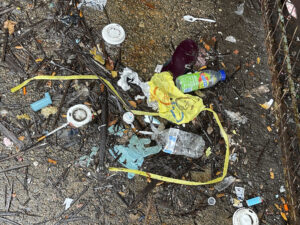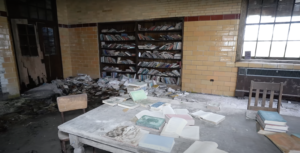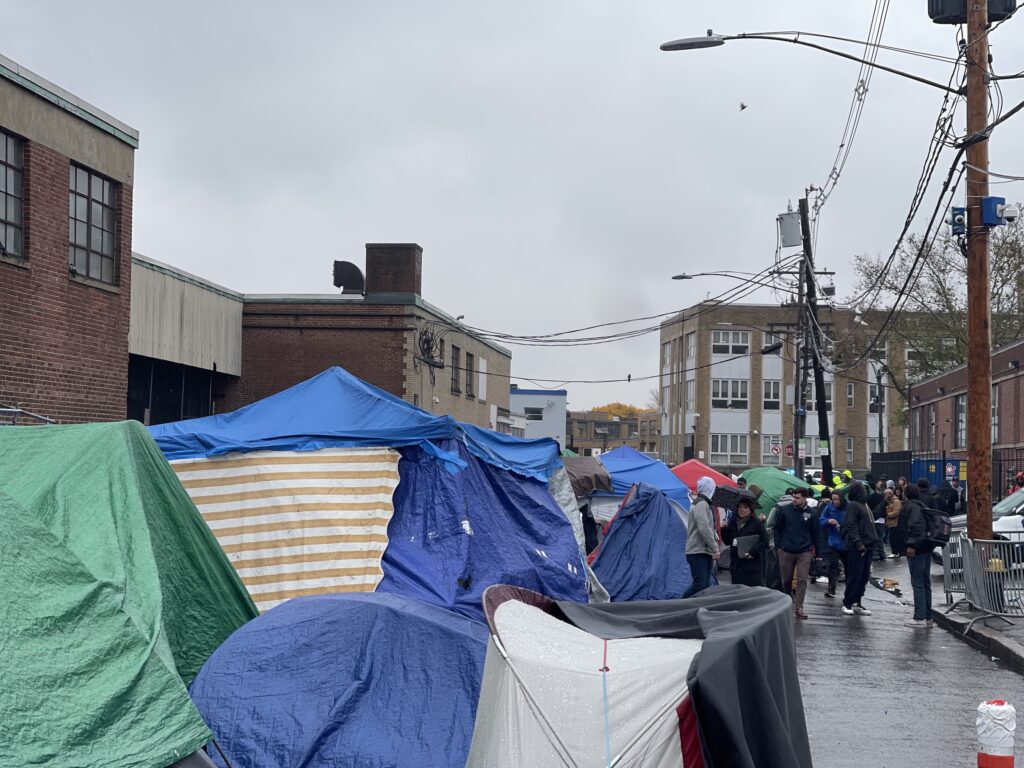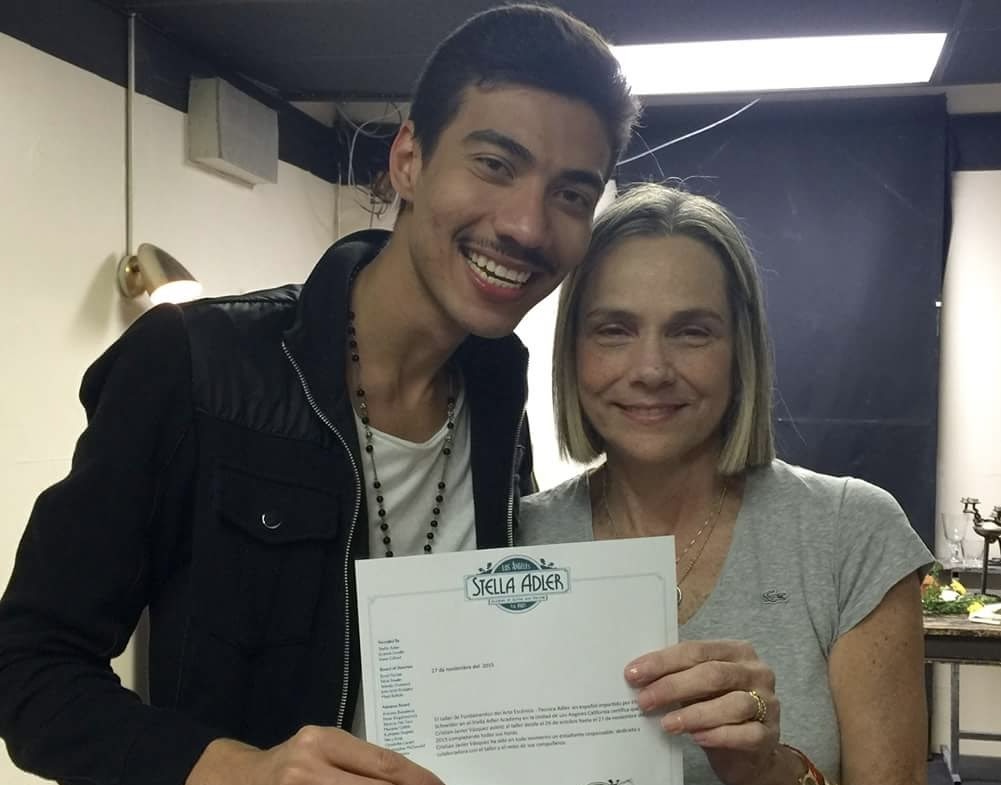(BOSTON, MA) – Four years ago, Aidan Chick had a supportive family: his mom, grandmother, and partner, whom he isn’t legally married to, but calls his wife. For eight months, Chick was keeping his substance use disorder a secret from them.
“I was asking my grandmother to send me a lot of money to get high, but she didn’t know what for, obviously,” Chick says. “And so, that Christmas Eve, December of 2019, I came out and told everybody. I told my wife, I told my grandma, I told everybody.”
It took Chick one month to get sober, without any aids like methadone, suboxone, or sublocade — commonly used to mitigate substance use and withdrawal. However, Chick’s progress faltered when he reconnected with his roommate, who he says is a drug dealer.
By the following spring, Chick was using again.
“Stupid move,” Chick, 29, says.
He’s used the services offered on Mass & Cass, but it has been a struggle to get sober while also recognizing that this addiction has a negative impact on his life.
For nearly a decade, Mass & Cass — the intersection between Massachusetts Avenue and Melnea Cass Boulevard — has been a focal point of Boston’s opioid and homelessness crisis. In response, Boston Mayor Michelle Wu published a blog post detailing the history of this mounting public health crisis and outlined a comprehensive plan to respond to the increasing violence in the area. This three-part plan consists of increasing low threshold housing, passing an ordinance, and rebuilding the bridge and recovery campus on Long Island.
Located near Boston Medical Center, the Mass & Cass area is a noisy stretch of concrete with hectic intersections, health clinics, shelters, and industrial businesses. Police presence is also abundant.
The 2023 Boston Homeless Census report, conducted in Jan., revealed that approximately 169 individuals were living on the street. The homeless population in Boston increased this year by 17.2% reaching 5,202 people who are mostly in transitional housing or shelters.
Wu proposed an ordinance on Aug. 28 to remove the tent encampments around Mass & Cass, primarily located on Atkinson and Southampton Streets. This ordinance allows police officers to remove people living in tents if there’s shelter and storage available for their belongings. It also prohibits the placement of new tents.
“Our goal in removing tents is to eliminate the violence and criminal activity shielded by the encampments, so that our teams can safely and effectively reach those who need housing and services,” Wu wrote in her blog justifying this measure.
The Click has reached out to Wu for comment via email and phone.
CBS News reports that Boston city data shows that the average weekly number of EMS calls has increased by 125% in the months of May through July 2023, compared to the same time last year.
“It’s becoming more of a public safety issue and that’s when we have to enforce laws, but we have to have the right laws to enforce around the tents and tarps,” Boston Police Commissioner and Chief Michael Cox says during an interview with WBUR Radio.
The Click has reached out to the Boston Police Department for comment via email and phone.
The ordinance passed on Oct. 25. A week later, the city moved 102 individuals — the last remaining encampment on Atkinson Street — into shelters.

Evidence of drug use on Topeka St. parallel to Atkinson St. with tourniquets, syringes, burnt plastic spoons, empty water bottles on the ground. [Credit: Felicie Jungels]
“It always ends up somewhere else. It’s just a matter of where… It’s just a matter of if they want to keep it in one area like Atkinson or do they want to have it spread out to multiple areas?” he wondered.
Chick says the absence of tents won’t deter individuals from using or selling drugs and it won’t diminish violence in the area.
“There’s still drug dealing on the street. There’s cameras on the street anyways, who gives a f–k. They already know they’re being watched,” Chick says.
Some individuals still prefer to sleep on the street, even when shelter is provided, Brendan Little, a former policy director for the mayor’s Office of Recovery Services, says.
“Some people who have gotten transitional housing nearby still come out and sleep out here because they’re connected to the community here,” Little, who is working on a documentary about Mass & Cass, says.
The Long Island Bridge
Overdoses are a daily occurrence in the Boston area with 247 deadly cases reported in 2022.
At the corner of AHOPE, a harm reduction and needle exchange site, two police officers stop to help a man lying on the street. They appear to be rubbing his chest. The Commonwealth of Massachusetts recommends this procedure, known as a “sternal rub,” to determine if someone has overdosed. It’s painful, and the assumption is that if someone were just sleeping, the pain would wake them up.
After receiving life-saving care, the patient is brought to the emergency room to be evaluated and may be placed into detox. Police officers in Massachusetts as well as loved ones are allowed to involuntarily admit someone into detox.
“People think detox is like going into rehab for three months, which is not what it is. Detox is five days where you just get medical [withdrawal], you get the drugs out of your system and then you go on your way,” Little says.
However, a short stay in a detox bed falls short of providing the comprehensive treatment necessary for an individual to attain sobriety. Individuals often find themselves back on the streets amidst a landscape of prevalent drug trafficking, violence, and substance use.
“When it comes to those services [after detox] where you need a residential setting, long-term care, a place to really situate yourself and get back on your feet…there’s less and less of those services,” Little says.
The second part of Wu’s strategy addresses initiatives such as the Long Island Recovery Campus. The campus aims to assist individuals in transitioning away from homelessness and escaping the drug-related violence of Mass & Cass.
But it won’t be an instant fix.
In Oct. 2014, the bridge to Long Island was abruptly demolished, cutting off access to the vital shelters and healthcare services on the recovery campus. Up to 250 people were displaced and relocated to the South End Fitness Center and Carter Auditorium on Northampton Street, WBUR reported.
Reconstruction of the bridge, to regain access to the island campus, has been delayed for years due to a contentious legal battle between Boston’s ownership of the island, and the bridge’s connection to Squantum in Quincy.
Quincy officials are not in favor of its reconstruction. In 2018, the Quincy Conversion Commission denied Boston’s application to rebuild the bridge, citing environmental and transportation concerns.
Regardless of Quincy’s resistance, the city of Boston announced on Aug. 10 that it had secured a license from the Massachusetts Department of Environmental Protection (MassDEP) to reconstruct the Long Island Bridge.
“With this major state approval in hand, our work to rebuild the Long Island Bridge and bring back this critical health care campus can truly begin,” Wu said in a press release about the MassDEP announcement. “This is a transformative opportunity to support families and meet the needs of individuals and communities across the region.”
The city of Boston needs to obtain two more permits before the reconstruction can start: a federal consistency review by Massachusetts Office of Coastal Zone Management and a U.S. Coast Guard permit. The city has set aside a budget of $81 million from its 2024 fiscal year’s capital budget for the bridge, which will be rebuilt using the existing piers, and an additional $34 million is designated to repair and stabilize existing buildings.
The project is expected to be completed in four years.
Currently, the island can only be accessed by boat. A YouTuber, who goes by the alias “Exploring With Josh,” used a kayak in 2021 to explore the island. The video shows the deserted island in a desolate and eerie state, frozen in time since the patients were kicked off.

Screenshot from YouTube video ‘The Real Shutter Island’, timestamp 10:42 [Credit: Exploring With Josh]

Screenshot from YouTube video ‘The Real Shutter Island’, timestamp 11:29 [Credit: Exploring With Josh]
“There were no tents, there were no encampments, there was no serious drug market. It was a residential recovery community,” Little says.
People using the services on Long Island had already been in short-term housing and had started their substance use recovery. They went there to stabilize themselves.
“That’s what the island’s best designed for…because it’s close enough to the mainland where if you need to go in for a doctor’s appointment you can get over the bridge – when there is a bridge – in ten minutes,” Little says. “But you can also have the time and space away [from the city] to have green space, oceanfront views, an organic farm where people grew the food that they ate in the kitchens…that was all a reality.”
As Boston navigates the challenges of permits, budgets, ordinances and tents, the Long Island recovery campus could be more than just a solution. It’s an overdue opportunity.


